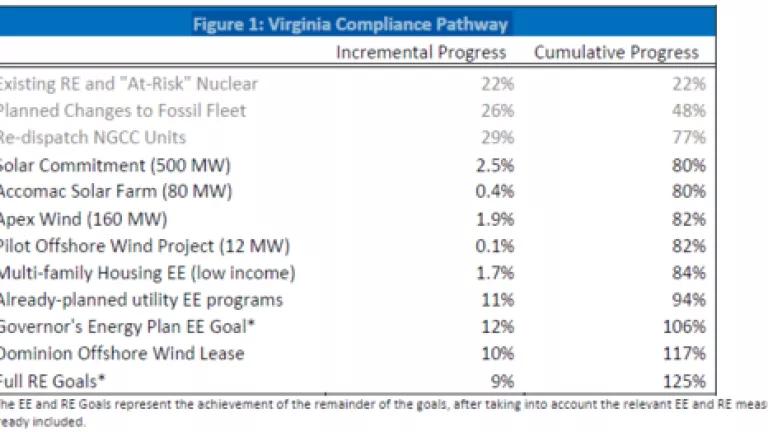
Governor McAuliffe's clean energy bill signing today was another step toward building a New Virginia Economy through the Clean Power Plan, which is not only our nation's first comprehensive effort to slow dangerous climate change by cleaning up carbon pollution from power plants, but which is also McAuliffe's best chance to both deliver clean energy jobs and address the climate change that already imperils Virginia's coast during his single term as the Commonwealth's Governor.
The solar facility at which Governor McAuliffe signed his bill is a small but growing part of the clean energy economy that is already booming next door in North Carolina (which has 954 megawatts of solar compared to Virginia's 12), in West Virginia (which has 583 MW of installed wind energy compared to Virginia's 0), and in Maryland (which is about to reduce its electricity consumption by 15%, compared to Virginia's annual reduction of about 0.1%).
Having such a relatively modest clean energy sector in Virginia is what makes the Clean Power Plan such an opportunity for the state: Virginia is already 80% of the way to its proposed Clean Power Plan target, due to already planned shifts away from its dirtiest and oldest coal plants. The remaining 20% can be covered in large part by increasing the number of solar facilities like the one McAuliffe visited today, all while creating up to 12,600 jobs in 2027 while also locking in zero-fuel cost renewable energy for the long-haul.
Indeed, the Governor's own Energy Plan goal of meeting the state's energy efficiency goal will get the state halfway to the rest of its target, along with other planned zero carbon resources, and meeting the state's renewable energy targets with more in-state solar and wind can get us even further, as shown in the table below.
This relatively easy time Virginia will have in meeting its pollution reduction target due to already planned clean-up of coal-based power was recently affirmed by PJM, the world's largest electric grid operator, which predicts Virginia could not only overcomply with the Clean Power Plan, but also generate excess credit to sell for additional revenue to other, higher-polluting states. This advantageous position was also highlighted by a recent study that showed Virginia could generate $2.8 billion in revenue if it joined the Regional Greenhouse Gas Initiative (RGGI).
These robust and realistic analyses -- also highlighted by a former FERC Chairman - highlight just how erroneous and offbase claims are that it would take new - and exorbitantly expensive -- nuclear energy plants, just to comply with a Clean Power Plan that is already 80% in the bag.
Luckily, as shown by the Governor's bill signing today, he understands that the Clean Power Plan is not just a win for the climate and for Virginia's imperiled coast, but a win for the New Virginia Economy as well.

